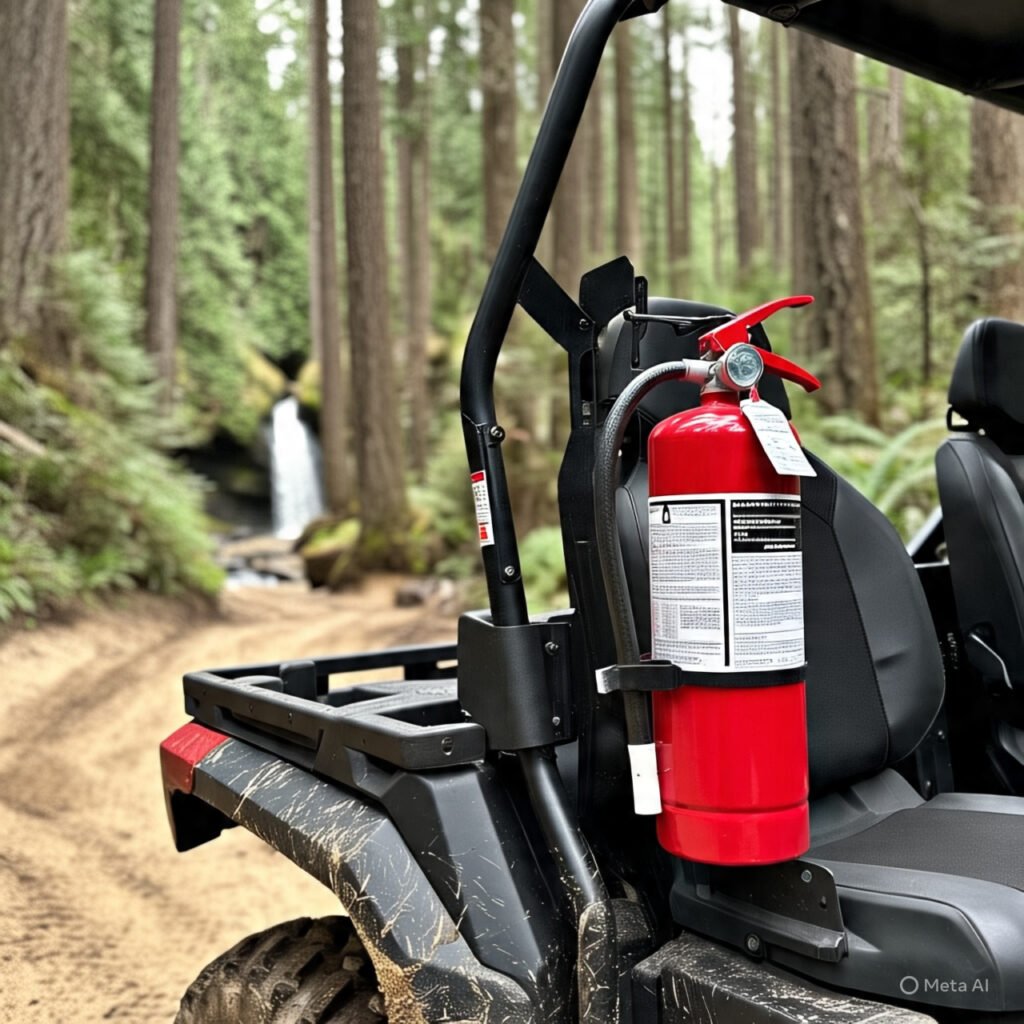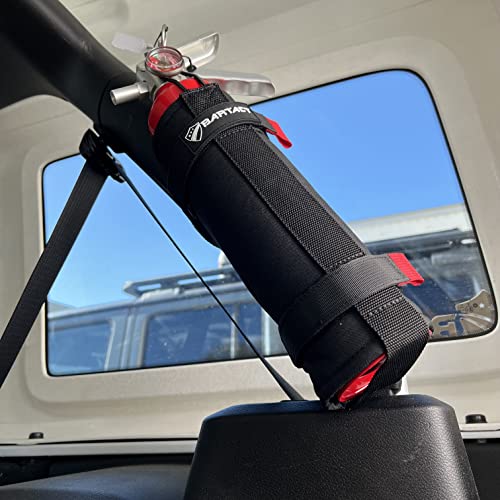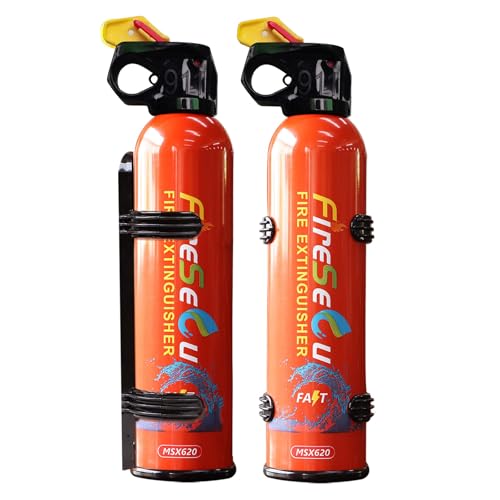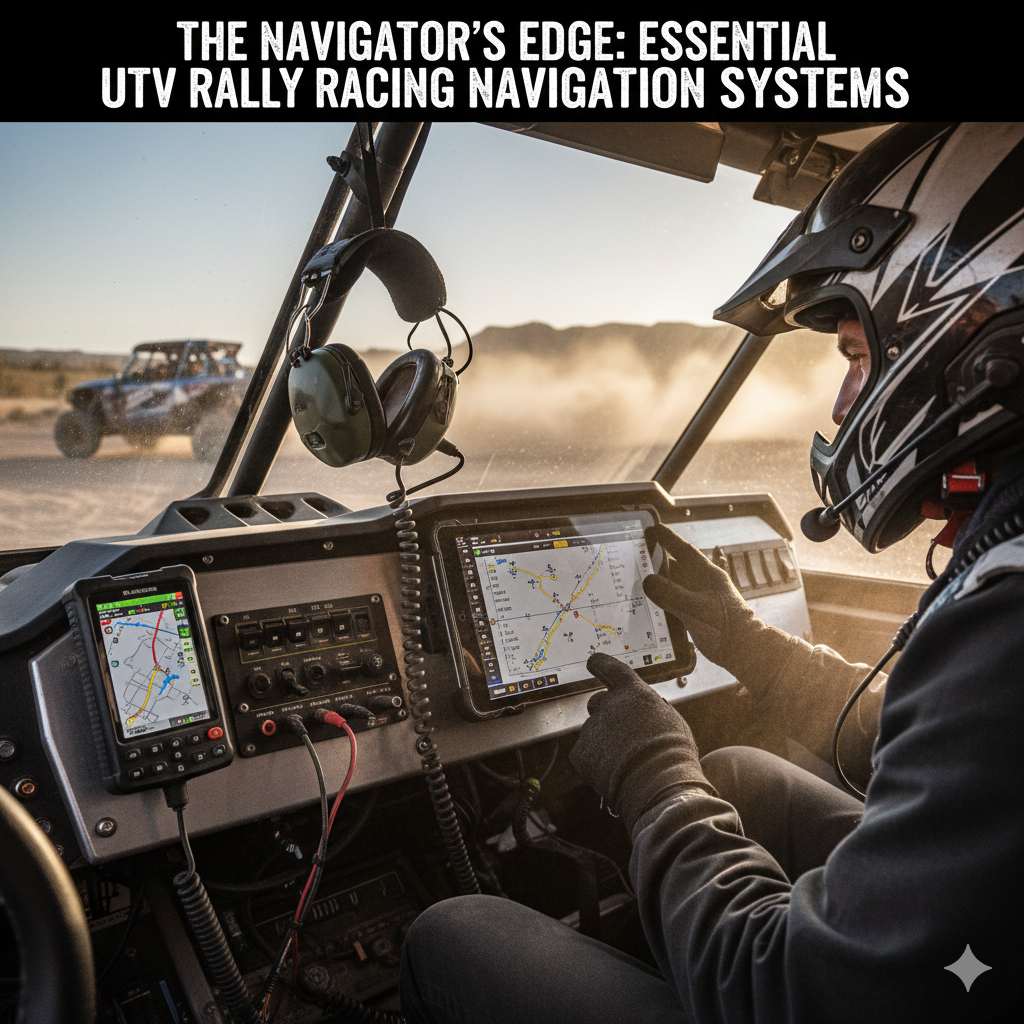Picture this: You’re deep in the backcountry, miles from the nearest road, when you notice smoke coming from under your UTV’s hood.
In that heart-stopping moment, having a fire extinguisher within reach isn’t just convenient—it’s potentially life-saving.
I learned this lesson the hard way when I witnessed a fellow rider’s machine catch fire during a desert run.
The difference between minor damage and a total loss?
A properly mounted fire extinguisher that was accessible in seconds.
That’s why I’m passionate about UTV fire extinguisher mounts—they’re not just another accessory, but essential safety equipment that every responsible off-roader should have.
Whether you’re crawling rocks, blazing trails, or simply enjoying weekend rides with family, the right mount ensures your extinguisher is secure during rough riding yet instantly accessible when needed.
In this guide, I’ll walk you through everything you need to know about choosing, installing, and maintaining the perfect fire extinguisher mount for your UTV.
From quick-release options to installation tips, I’ve got you covered.
Let’s make sure your next adventure is both thrilling AND safe!
Why Every UTV Owner Needs a Proper Fire Extinguisher Mount
Let’s be honest—nobody likes to think about emergencies.
But when you’re miles from help, self-reliance isn’t optional.
UTVs combine several fire risk factors that make carrying an extinguisher absolutely essential: hot engines in close proximity to passengers, fuel lines under pressure, electrical systems exposed to the elements, and often operation in dry, combustible environments.
I remember riding through tall, dry grass in late summer when a buddy’s machine suddenly developed an exhaust leak.
The hot manifold ignited the brush underneath, and within seconds, flames were licking at the undercarriage.
His quick action with an extinguisher prevented what could have been a disaster—both for his UTV and potentially the surrounding wilderness.
But here’s the thing: simply having an extinguisher isn’t enough.
Without a proper mount, that life-saving canister becomes a dangerous projectile during the very off-road adventures you enjoy.
I’ve seen loose extinguishers bounce around cabins, causing damage and even injuries.
Worse yet, when an emergency strikes, fumbling around trying to locate an unsecured extinguisher wastes precious seconds when every moment counts.
A quality UTV fire extinguisher mount solves both problems—keeping your safety equipment secure during rough riding while ensuring it’s instantly accessible when needed.
It’s one of those preparations you hope never to use, but will be eternally grateful for if the situation arises.
Understanding UTV Fire Extinguisher Mount Types: Which is Right for You?
Not all mounts are created equal, and choosing the right one depends on your specific UTV model, riding style, and personal preferences.
Let’s break down the main types to help you make an informed decision.
Quick-Release Mounts: Speed When It Matters Most
When it comes to emergencies, seconds matter.
That’s why quick-release mounts have become the gold standard for UTV fire safety.
These systems typically feature a simple pin or lever mechanism that allows one-handed operation—pull a pin, and the extinguisher comes free instantly.
The best quick-release mounts include a tethered pin design, which prevents you from losing that crucial release mechanism during the stress of an emergency.
I particularly appreciate designs that incorporate a leash or cable that keeps the pin attached to the mount base.
This thoughtful feature means you won’t be searching for a tiny pin that dropped into your floorboard when you need your extinguisher most.
Most quality quick-release mounts are constructed from billet aluminum, offering the perfect balance of lightweight durability and corrosion resistance—essential qualities for equipment exposed to the elements.
Roll Bar Mounts: Finding the Perfect Position
The most common mounting location for UTV fire extinguishers is on the roll cage, but position matters tremendously for both accessibility and protection.
Overhead mounting positions offer excellent protection for the extinguisher while keeping it out of the way during normal operation.
However, this location can sometimes make the extinguisher more difficult to reach quickly, especially for shorter riders or those wearing helmets with visors.
Side mounting—typically on the A or B pillar of your roll cage—offers a good compromise between accessibility and protection.
This position keeps the extinguisher within easy reach of the driver while still securing it away from moving parts and passenger space.
Behind-the-seat mounting works well in UTVs with limited roll cage space but requires ensuring the extinguisher won’t interfere with seat adjustment or safety harnesses.
When selecting a roll bar mount, pay close attention to the diameter compatibility.
Most UTV roll cages range from 1.75″ to 2″ in diameter, and using the wrong size mount can result in either a loose fit (dangerous) or inability to install.
Many quality mounts now come with adjustable or multiple-size clamps to accommodate different cage diameters.
MOLLE Panel and Specialty Mounts: For Custom Setups
For those with heavily customized UTVs or specific mounting requirements, specialty options like MOLLE panel mounts offer versatility beyond standard roll cage installations.
MOLLE (Modular Lightweight Load-carrying Equipment) panels have become increasingly popular in the UTV world, allowing for customizable mounting of various accessories.
Fire extinguisher mounts designed for these panels offer secure attachment while maintaining the quick-release functionality critical for emergencies.
Some manufacturers also offer model-specific mounts designed to work with particular UTV brands and their unique cage designs.
These can be especially valuable for machines with non-round tubing or limited mounting space.
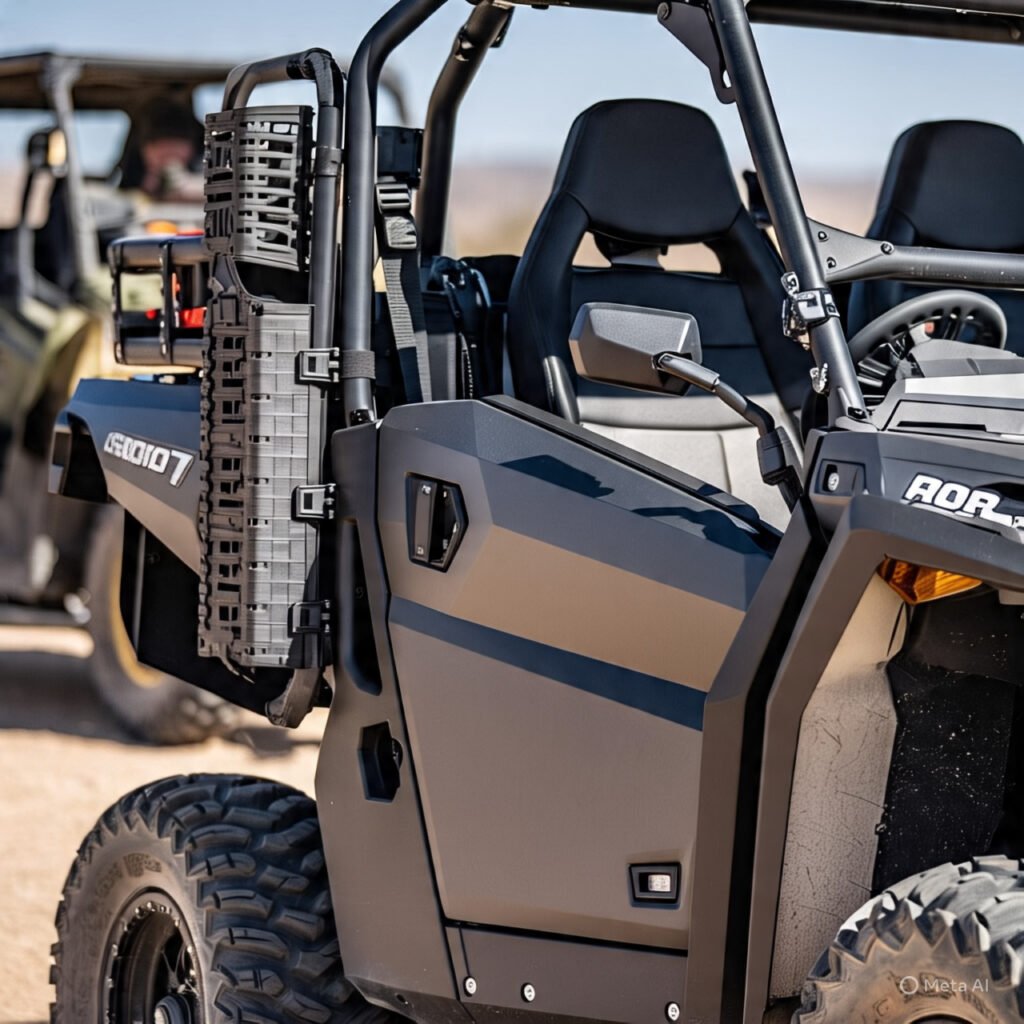
Choosing the Right Fire Extinguisher for Your Mount
Having the perfect mount is only half the equation—you also need the right extinguisher to pair with it.
Let’s explore what to look for when selecting this crucial piece of safety equipment.
Size and Weight Considerations: Finding the Balance
When it comes to fire extinguishers, bigger isn’t always better, especially in the confined space of a UTV.
The most common sizes for UTV applications are 2.5lb and 5lb units, with the choice depending on your available space and the level of protection desired.
A 2.5lb extinguisher offers a good balance of effectiveness and compact size, making it ideal for smaller UTVs or installations where space is at a premium.
These units typically have a discharge time of 8-12 seconds—enough to address most small fires if used promptly.
For larger machines or those used in particularly high-risk environments (like dry forests or desert brush), a 5lb extinguisher provides extended discharge time (typically 13-20 seconds) and greater coverage area.
The tradeoff is additional weight and size, which requires more robust mounting solutions.
Regardless of size, I strongly recommend selecting an ABC-rated extinguisher, which is effective against:
- Class A fires (ordinary combustibles like wood and paper)
- Class B fires (flammable liquids like gasoline and oil)
- Class C fires (energized electrical equipment)
This versatility ensures you’re prepared for virtually any fire emergency you might encounter on the trail.
Marine-Grade vs. Standard: Why Environment Matters
Not all fire extinguishers are built to withstand the harsh conditions UTVs regularly encounter.
Standard household extinguishers aren’t designed for the constant vibration, temperature extremes, and exposure to elements that come with off-road adventures.
Marine-grade extinguishers, on the other hand, are specifically engineered to withstand these challenging conditions.
They typically feature:
- Corrosion-resistant cylinders and components
- More robust mounting brackets
- Vibration-resistant internal components
- Weather-resistant labels and instructions
- Higher-quality pressure gauges that remain accurate despite temperature fluctuations
While marine-grade extinguishers generally cost more than standard units, the additional durability makes them a wise investment for UTV applications.
After all, an extinguisher that fails when you need it most is worse than not having one at all.
When selecting an extinguisher, look for units that meet or exceed U.S. Coast Guard requirements, even for land use.
This certification ensures the extinguisher has been tested and approved for use in harsh environments similar to what your UTV will experience.
Installation Guide: Mounting Your UTV Fire Extinguisher Like a Pro
With the right mount and extinguisher selected, it’s time to install your fire safety system.
Proper installation ensures your extinguisher stays secure during rough riding while remaining accessible in emergencies.
Essential Tools and Preparation
Before starting the installation, gather these tools and materials:
- Appropriate wrenches or socket set (metric and standard)
- Screwdrivers (flathead and Phillips)
- Measuring tape
- Marker or pencil
- Thread locker (medium strength)
- Torque wrench (if specified by mount manufacturer)
Take time to read through the specific instructions that came with your mount.
While the general process is similar across most products, small details like torque specifications and included hardware can vary significantly.
Before drilling any holes or tightening any bolts, plan your mounting location carefully.
Consider these factors:
- Driver accessibility (can you reach it while seated with harnesses on?)
- Passenger clearance (will it interfere with entry/exit or comfort?)
- Protection from damage (is it likely to be hit by branches or during rollovers?)
- Interference with other accessories (light bars,mirrors, etc.)
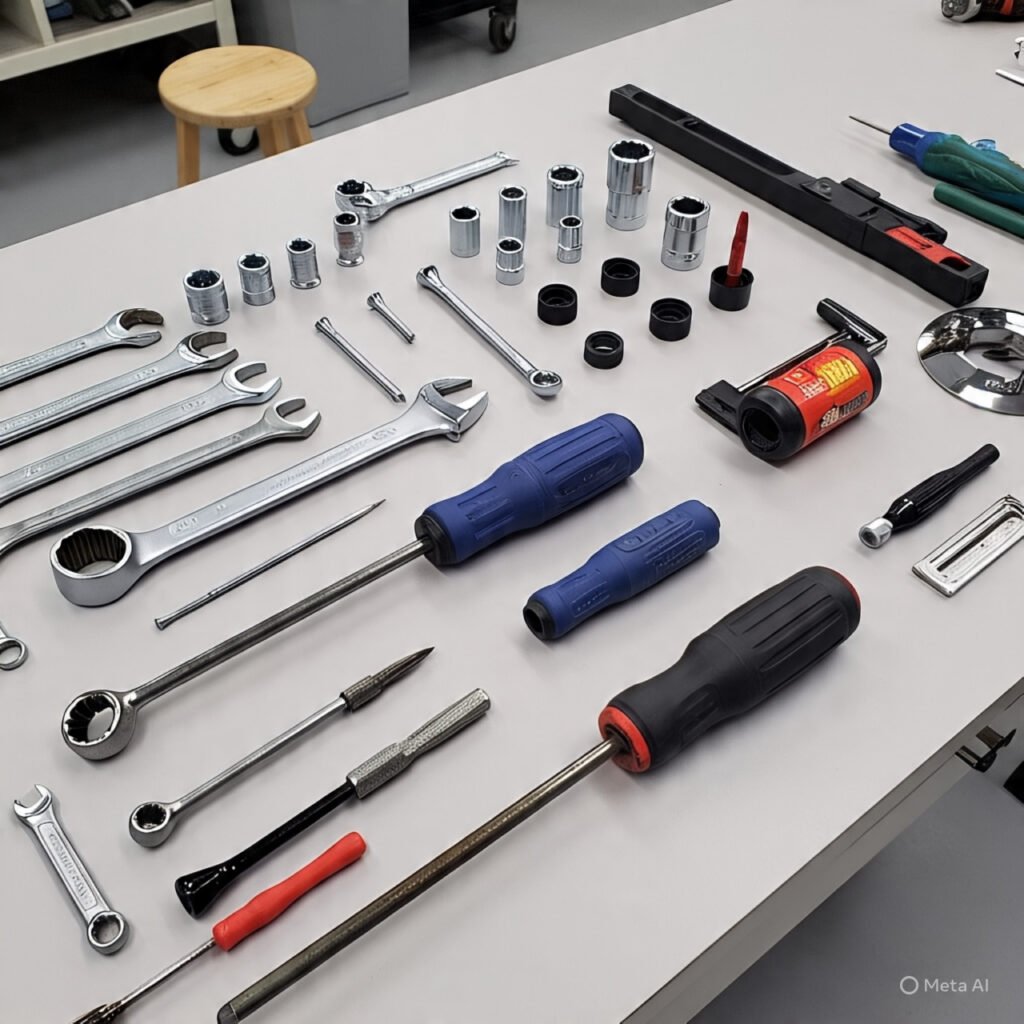
Step-by-Step Installation Process
While specific instructions vary by mount type and UTV model, here’s a general guide for installing a typical roll bar mount:
- Position the mount on your selected roll bar location. For most drivers, mounting on the passenger side A-pillar provides good accessibility without interfering with driving controls.
- Mark the position with tape or a marker to ensure it doesn’t shift during installation.
- Attach the main bracket to the roll bar using the provided clamps. Hand-tighten only at this stage to allow for adjustments.
- Check clearance by sitting in your normal driving position and verifying you can easily reach the mount location. Also check that the extinguisher won’t interfere with passenger comfort or vehicle controls.
- Adjust as needed until you find the optimal position that balances accessibility with security.
- Apply thread locker to the mounting bolts before final tightening to prevent vibration from loosening the hardware over time.
- Tighten all hardware to the manufacturer’s specified torque. If no specification is provided, ensure connections are secure but avoid over-tightening, which can damage components or the roll cage coating.
- Attach the extinguisher holder to the main bracket according to the manufacturer’s instructions.
- Secure the extinguisher in the mount, ensuring all retention mechanisms (straps, clamps, or pins) are properly engaged.
- Test the quick-release mechanism several times to ensure smooth operation and familiarize yourself with its function.
Remember that proper alignment is crucial for quick-release mechanisms to function correctly.
Take your time during installation to ensure everything lines up perfectly.
Testing Your Mount: Ensuring Quick Access When It Counts
After installation, thorough testing is essential to ensure your fire safety system will perform when needed.
First, practice releasing and removing the extinguisher multiple times while seated in your normal driving position.
The motion should become fluid and intuitive—something you could do even in a high-stress situation or with limited visibility.
If you wear gloves while riding, test the release mechanism while wearing them.
Some mechanisms that work fine with bare hands can be difficult to operate with thick gloves.
Once you’ve verified the release works smoothly, take your UTV for a test ride over terrain similar to what you typically encounter.
After the ride, check that:
- The mount remains securely attached to the roll cage
- All hardware is still tight
- The extinguisher hasn’t shifted in its holder
- The quick-release mechanism still functions properly
Pay particular attention to any rattling or movement.
A properly installed mount should hold the extinguisher firmly without vibration, which can be both annoying during normal operation and potentially dangerous if it causes wear on mounting components.
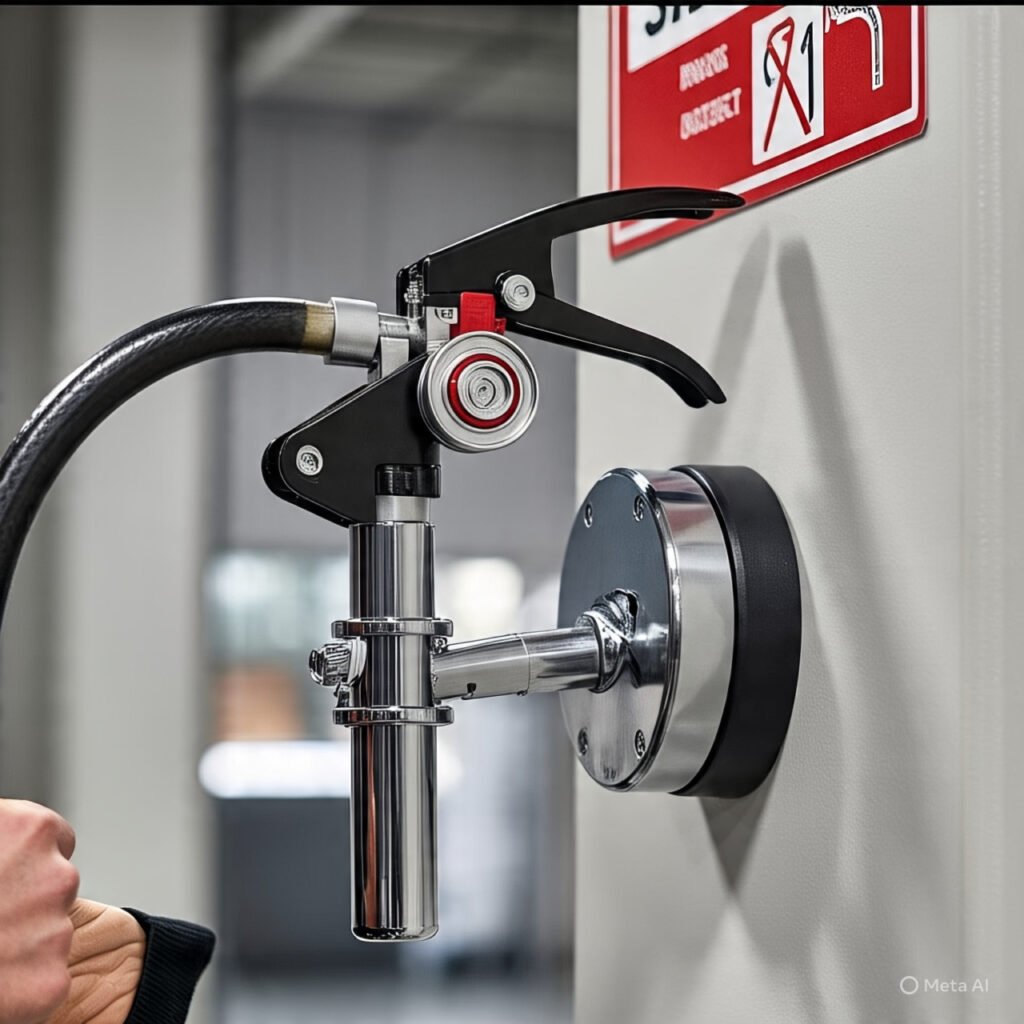
Maintenance Tips: Keeping Your Fire Safety System Ready
Like any safety equipment, your fire extinguisher and mount require regular maintenance to ensure they’ll function properly when needed.
Regular Inspection Routine
Develop a habit of checking your fire safety system before each riding season, and ideally before any extended trip.
A quick monthly inspection only takes a few minutes but could literally be a lifesaver.
For the extinguisher itself:
- Check the pressure gauge (it should be in the green zone)
- Inspect for physical damage to the cylinder or hose
- Ensure the safety pin is intact and properly inserted
- Verify the tamper seal is unbroken
- Check the date on the inspection tag (most extinguishers need professional inspection every 5-6 years)
For the mount:
- Check that all hardware remains tight
- Inspect for cracks, bends, or other damage
- Test the quick-release mechanism for smooth operation
- Ensure retention straps or clamps are in good condition
- Verify the extinguisher sits securely in the mount without wobbling
Remember that extreme off-road conditions can accelerate wear on both your extinguisher and mount.
Mud, water crossings, and constant vibration take their toll on equipment, making regular inspection even more important for off-road vehicles than for street applications.
Protecting Your Investment: Mount and Extinguisher Care
A few simple maintenance steps can significantly extend the life of your fire safety system.
For aluminum mounts, occasional cleaning and a light application of silicone spray on moving parts will keep the quick-release mechanism functioning smoothly.
Avoid petroleum-based lubricants, which can attract dust and grit that may interfere with operation.
If your UTV is exposed to salt (either from ocean environments or winter road treatments), rinse the mount thoroughly after exposure and consider applying a corrosion inhibitor designed for aluminum components.
For the extinguisher itself, avoid exposing it to prolonged direct sunlight, which can degrade the pressure gauge and external components.
If your UTV is stored outdoors or in an uncontrolled environment, consider removing the extinguisher and storing it in more moderate conditions.
Most importantly, replace your extinguisher according to the manufacturer’s recommendations, typically every 5-12 years depending on the type.
Even if the pressure gauge still shows a charge, internal components can degrade over time, potentially causing failure when you need it most.
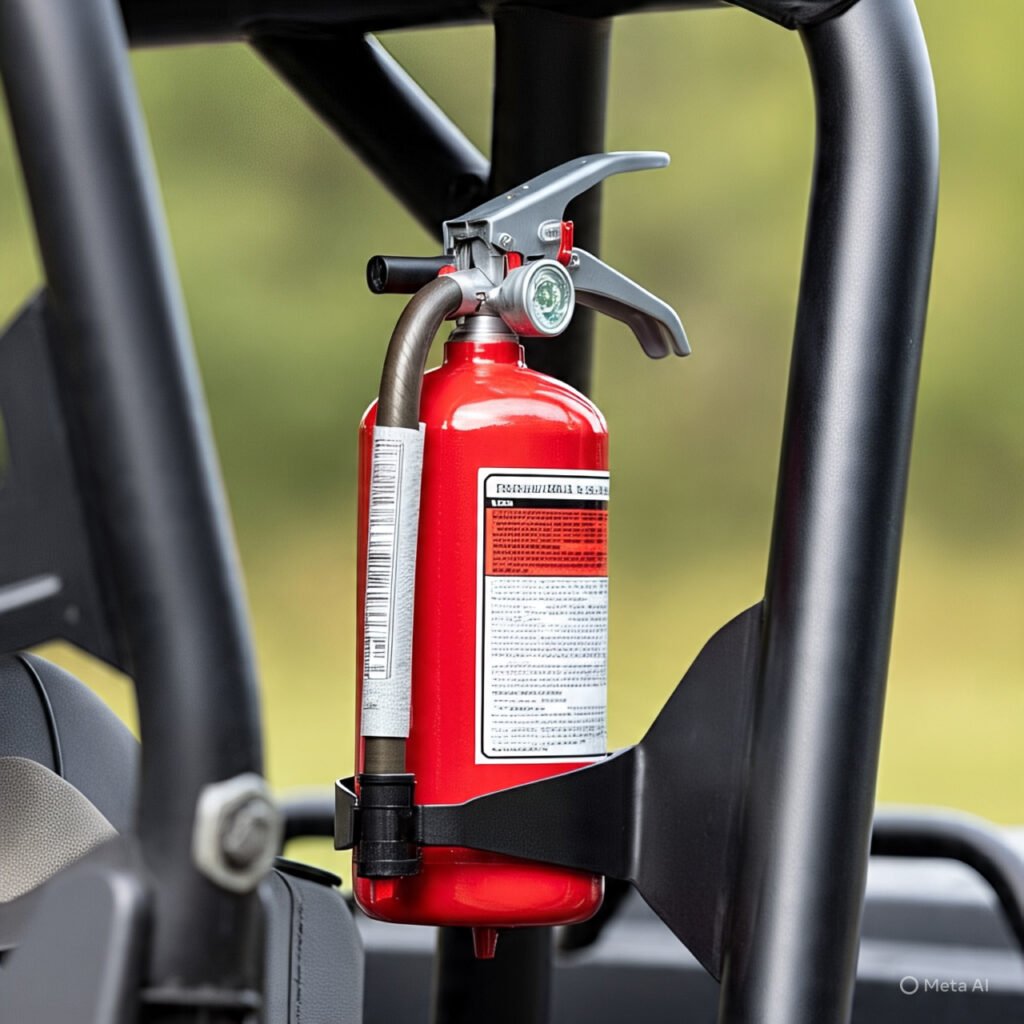
Conclusion
When it comes to off-road adventures, preparation is everything—and fire safety should be at the top of your preparation list.
A quality UTV fire extinguisher mount paired with the right extinguisher provides peace of mind that can make your adventures more enjoyable and potentially save your valuable equipment—or even lives—in an emergency.
Remember the three key elements we’ve discussed: quick access through proper mounting, secure attachment that prevents dangerous movement during rough riding, and regular maintenance to ensure everything functions when needed.
These simple principles form the foundation of effective UTV fire safety.
I encourage you to take a critical look at your current setup.
Is your extinguisher properly secured?
Can you access it within seconds while seated?
Is it the right type and size for your typical riding environment?
If you answered “no” to any of these questions, consider upgrading your system using the guidelines we’ve covered.
The off-road community is built on looking out for each other, and proper fire safety is part of being a responsible member of that community.
Share your knowledge with fellow riders, and don’t hesitate to offer advice if you notice unsafe setups on the trail.
Stay safe out there, and happy trails!

